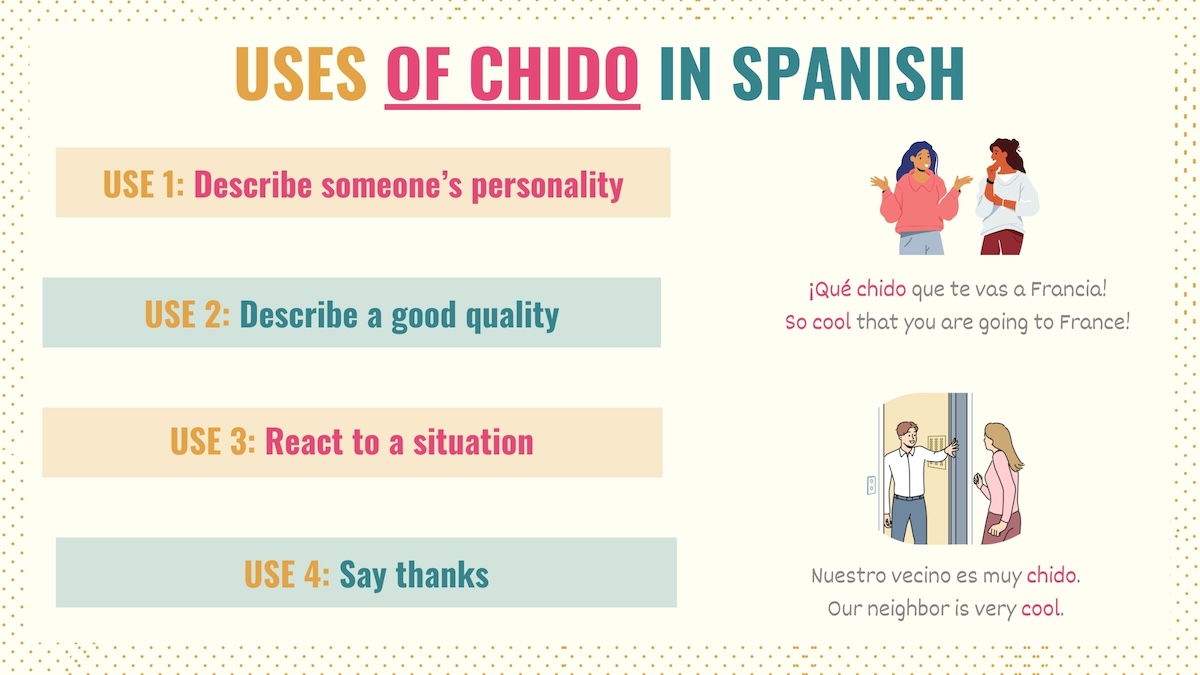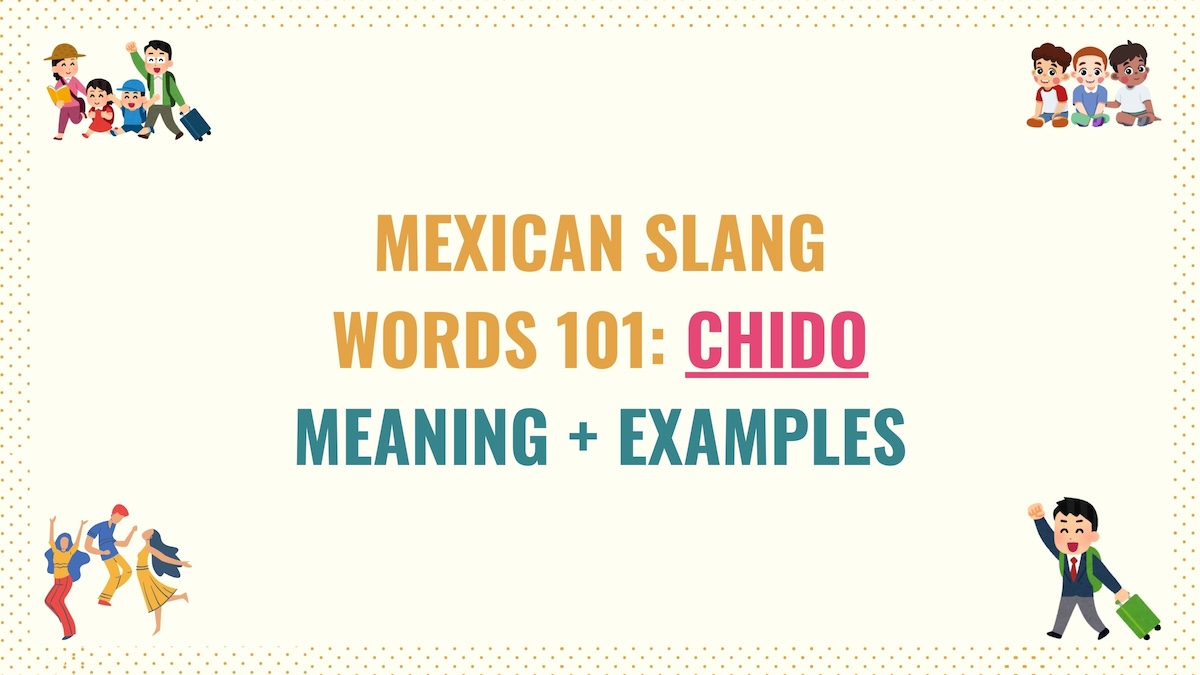In Mexican slang Spanish, chido is an adjective that describes that something or someone is cool, nice, pretty or good. In Mexico, chido is also used as an informal way to thank.
Nuestro vecino es muy chido.
Our neighbor is very cool.
No está tan chido como pensé.
It’s not as good as I thought.
¡Qué chida estuvo la película! ¿Te gustó?
That movie was very cool! Did you like it?
Chido is one of the most common Mexican slang words and, as you’ll see in more detail in the coming sections, it can be applied in different situations.
How & When to Use Chido
There are four main situations where chido can be used:
- Describing someone’s personality
- Describing or emphasizing quality or appearance
- Reacting to a situation
- Thanking
In Mexican Spanish, chido can work as an informal adjective to describe people’s personality. In this context, chido means ‘cool’, ‘nice’, or ‘great’, and must mark gender and number:
Ser + (adverb) + chido
Mis amigos son muy chidos.
My friends are very cool.
La neta, tu ex no era chida. Nunca me cayó bien.
To be honest, your ex was not cool. I never liked her.
Las chicas nuevas son bien chidas, ¿ya las conoces?
The new girls are very nice. Do you already know them?
Take Note: When describing personality, chido works with the verb ser.
We Mexican speakers also use chido to express that an object has good qualities or a cool appearance.
¡Qué chido está tu carro!
Your car is so cool!
La fiesta a la que fui estuvo muy chida
The party I went to was very cool.
Este libro no está tan chido como el primero.
This book is not as good as the first one.
The expression ¡qué chido! (how cool/so cool) is used to react to a situation, by showing excitement or happiness:
¡Qué chido que te vas a Francia!
So cool that you are going to France!
¿Sí te dieron el trabajo? ¡Qué chido!
Did you get the job? How cool!
A less popular meaning of chido among Spanish learners is as an informal way to say thank you or to agree with a situation.
| Spanish | English |
|---|---|
| Person 1: Ya te mandé tu dinero. | Person 1: I already sent you your money. |
| Person 2: Chido. Ya me llegó. | Person 2: Thanks. I already got it. |
| Spanish | English |
|---|---|
| Person 1: Entonces, mañana paso por ti. | Person 1: So, I’ll pick you up tomorrow. |
| Person 2: Chido. Te veo mañana temprano. | Person 2: Great. See you tomorrow. |
Other Ways to Say Chido in Mexican Slang
Even though chido is a very popular slang term in Mexican Spanish, there are other informational words and phrases that you can use instead:
- Padre means ‘cool’ or ‘great’, but it can only be used to describe objects.
- ¡Qué padre! is used to react to a situation by expressing surprise.
- Ser buena onda is another way to say ‘cool’ when describing people’s personality in Mexican Spanish.
- ¡Qué buena onda! means ‘how cool’ or ‘great’ and it’s used to react to a situation.
La película que vimos estuvo muy padre.
The movie we saw was very nice.
Qué buena onda que vas a poder ir!
It’s so cool that you’ll be able to go!
La maestra nueva no es muy buena onda.
The new teacher is not very cool.


